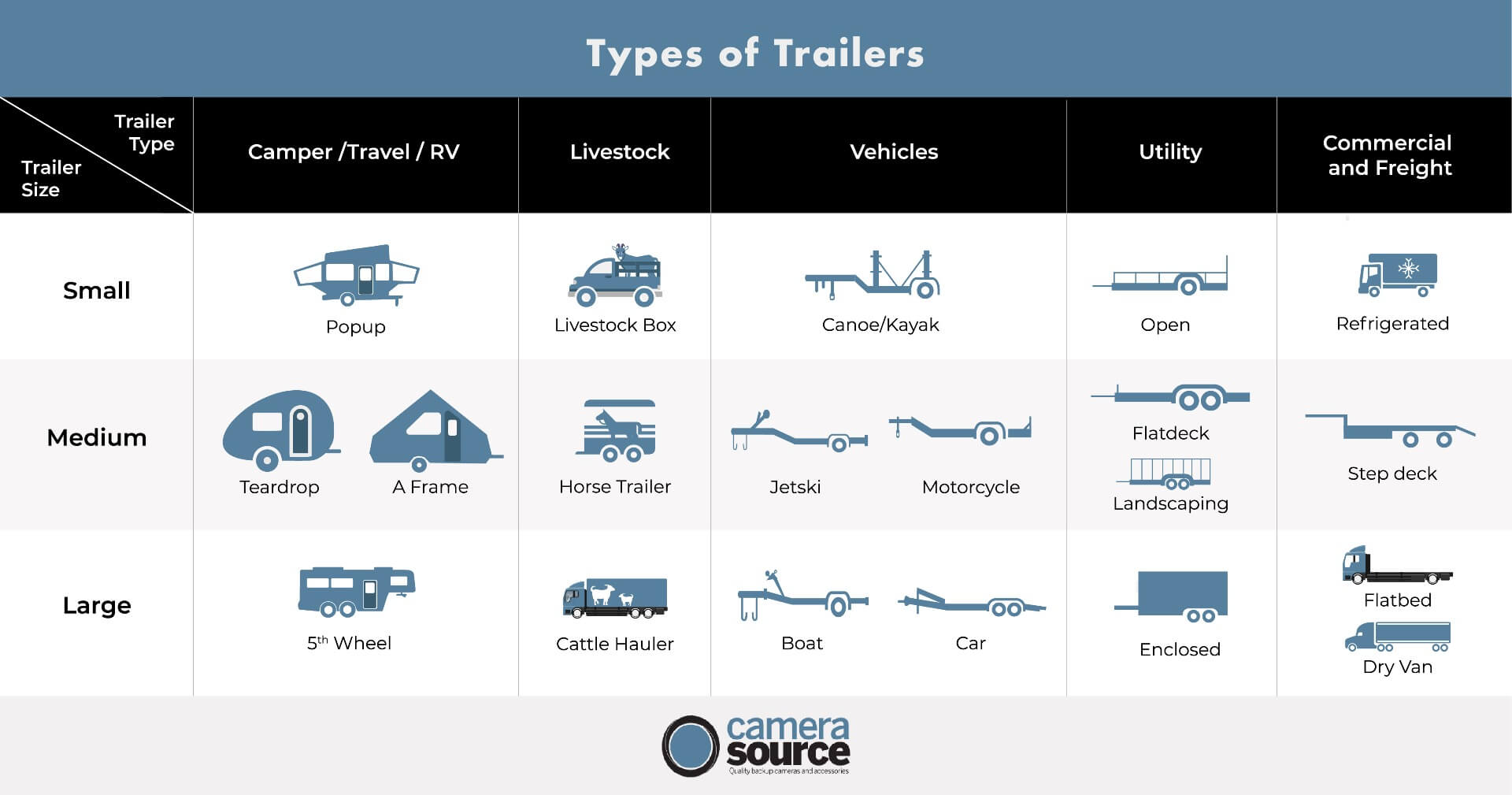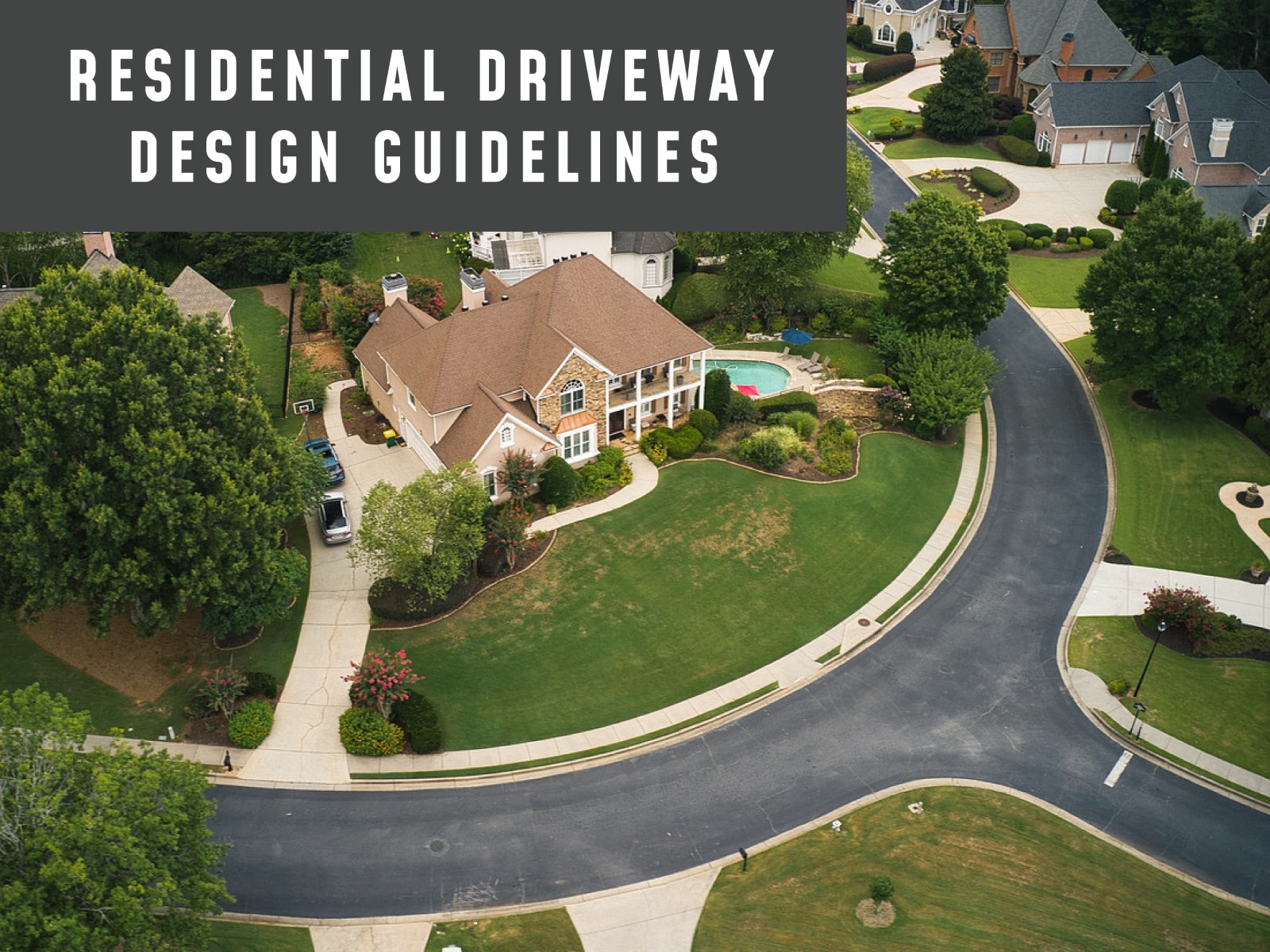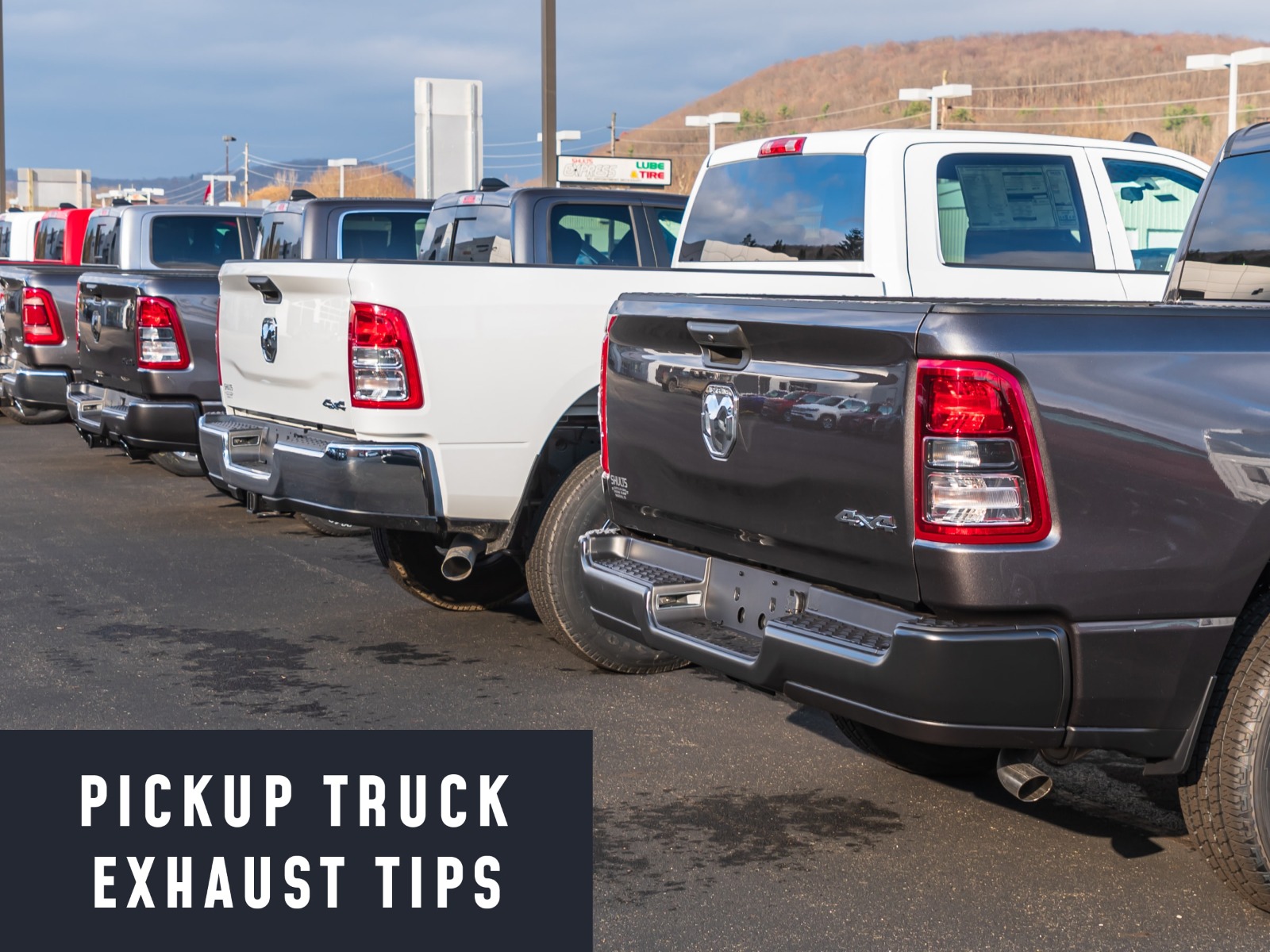Trailers come in a variety of shapes and sizes to be able to accommodate different vehicles and cargos. They can take some weight off your roof rack or increase your SUV load capacity. The different types of trailers can be categorized by their use, size, and shape. The cargo the trailer will be used for usually determines the size and shape of the trailer. Trailers often have other features that are use-specific, so identifying precisely how you’re going to use the trailer is important. When shopping for trailers, knowing the size of cargo you’ll be regularly transporting is key, and it is also important when you’re working out what size of vehicle you’ll need to pull the trailer.
No matter what type of trailer you may currently have or plan to in the future, protect it, your cargo, and your vehicle with help from Camera Source. We offer the highest quality cameras at great prices:
If you’re shopping around for trailers, we’ll give an overview of the sizes, shapes, and uses of different trailer types, and how you can improve your hauling experience.
Types of Utility Trailers
Utility trailers are non-powered vehicles that are towed by powered vehicles like a car or truck. They are connected with a hitch, usually a two-inch ball hitch, which allows for the trailer to move independently from the towing vehicle. There are many different types of utility trailers available, with tailgate options, size options, and configurations that are specific to particular needs. Utility trailers are pretty versatile, but knowing the different configurations and uses is important. Here’s several different types.
Open-Air Trailers
Open-air trailers are what they sound like, they are open to fresh air. Often these trailers will feature some combination of metal and wood, usually treated to handle the elements. Most of the time, there will be a wooden floor using 2x8s and some form of side rail for cargo containment, and they are affordable. As a general use trailer, they are handy but offer little protection from the elements.
Flatdeck Trailers
Flatdeck trailers are like open-air trailers, but they’re designed for easier loading and durability, and often do not have sides, rails, or a tailgate so you can easily load different sized items on them. One of the most common uses for a flatdeck trailer is carrying vehicles. Since there’s not a lot of surfaces to secure a camera to, a recess lip mounted backup camera or a universal surface mount backup camera are great options to enhance safety and confidence when driving in reverse.
Landscape Trailers
Another variation of open-air trailers is the landscape trailer, which is used to carry landscaping materials. Often, these are modified open-air trailers that have built-in ramps, racks, tie downs, and other features designed to help with landscaping equipment and supplies. A heavy duty dual backup camera is a good option for landscape trailers since they need to be durable, and the second camera can be used to monitor the contents of the trailer like gravel, plants, or expensive tools.
Dump Trailers
A dump trailer is like a dump truck, utilizing hydraulics to lift trailer beds from their frames, making unloading heavy stuff easier and more efficient. Dump trailers come in different sizes, but often will require a vehicle large enough to haul and weigh them down, but they are versatile, so they can often be a great investment if you do a lot of hauling. Backup cameras like a 3rd brake light camera or universal camera with an adjustable angle mount can be helpful when using a dump trailer. You can use the backup camera to monitor the load in transit, while dumping, or to reverse around obstacles and through tight spaces with confidence and precision..
Enclosed Trailers
Enclosed trailers, also called cargo trailers, and like open-air trailers, are pretty self-explanatory. They’re secure, watertight, and have a durable cargo box design.These trailers are designed to endure harsh weather and offer maximum protection. Because of this, they’re often expensive. These trailers usually come in widths from five to eight feet, and lengths from eight to thirty-two feet. Like regular utility trailers, an enclosed trailer must have brake lights and proper license plates in order to be road-worthy in the United States. They’re super versatile and are some of the most widely used trailers by contractors and other professionals. equipment
Livestock Trailers
Livestock trailers are enclosed trailers with bumper pull or gooseneck hitches that are designed to transport and house animals safely. They are ventilated, naturally, and often have windows, tie downs, ramps, and pen systems to keep animals safe while in transit. Smaller livestock trailers are called stock boxes, while larger ones are often referred to as cattle haulers. It’s a good idea to equip livestock trailers (and other farm vehicles and farming equipment) with agricultural backup cameras to avoid rollovers and collisions with people, animals, or objects when reversing in and out of paddocks, barns, or pastures.
Types of Recreational Vehicle Trailers
Recreation and vehicle trailers are specifically designed to safely transport and haul specific types of vehicles. Here are some of the types you might encounter.
Car Trailers
Car trailers are four-wheeled car carriers that can hold an entire vehicle in transit. Unlike hitches and tow dollies that lift the front end of a vehicle, a car trailer allows you to haul a car fully off the ground, reducing wear on the car while in transit. Since car trailers are large and transport large and valuable cargo, they benefit from backup cameras to assist in loading and unloading.
Tow Dollies
A tow dolly is a small trailer that tows the front of a car by lifting the front wheels off the ground. Depending on the weight of the vehicle being towed, this might not work, but tow dollies are effective for many smaller vehicles.
Boat, Motorcycle, & Other Vehicle Trailers
There are many other types of trailers and dollies that are vehicle specific, but the most common are boat, motorcycle, jetski, and kayak and canoe dollies. Each of these will have different specifications and limitations, so evaluate them on a case-by-case basis.
Campers & Travel Trailers
Campers and recreational vehicles that are towed behind a vehicle are travel trailers. These are vehicles that are also domiciles that are commonly used for road tripping, camping, or living the mobile lifestyle. Many utilize fifth-wheel hitches, while others use simple ball hitches. Most of the time, a camper or trailer will have a frame and the necessary accoutrement to make sure that you can easily haul it, and live in it.
Fifth-Wheel Travel Trailer
Fifth-wheel trailers are a type of camper travel trailer that will give you the benefits of a full-sized RV, without including the engine and other parts. They can be tricky to drive with, and they also require a specific type of hitch and truck to haul, making a camper and 5th wheel backup camera helpful for parking, reversing, and hitching the camper trailer to your vehicle.
Popup Travel Trailer
Popup trailers are trailers that “pop-up,” becoming a full sized sleeping trailer and camper when opened. They’re often less expensive than other types of trailers and take up less space when not in use. Although they are smaller and easier to maneuver than other campers and travel trailers, they can benefit from backup cameras as well. These trailers are often lumped together with A-frame trailers, and they are very similar, though an A-frame usually has a more robust frame.
Teardrop Travel Trailer
Sometimes referred to as a tiny camper, these trailers are indeed small. Many are shaped like teardrops, and usually are able to sleep 1-2 people, and do not have tables or any other amenities of larger trailers. The advantage, of course, is that they can be hauled by smaller vehicles and are much easier to store.
Trucking & Freight Trailers
There’s plenty of different types of trucking and freight trailers, depending on the type of freight being hauled. Here are some of the most common you may find in a commercial fleet.
Flatbed Trailers
If you’re a long-haul trucker, many of these trailers will make an appearance along the road. Flatbed trailers are often attached to a cab to hold shipping boxes or other types of freight. They’re cheap, come in a variety of sizes, and are incredibly versatile.
Dry Van Trailers
Dry van trailers are often what people think of when they think of semis and long-haul trucking. They’re those giant, boxy trailers that sit on the back of a commercial hauling vehicle. These are use-specific and often expensive, so protecting them with backup cameras is always a good idea.
Refrigerated Trailers
Refrigerated trailers are exactly what they sound like: enclosed shipping trailers with built-in refrigeration. These trailers often require generators and specialized vehicles for transport.
Step Deck and Hotshot Trailers
Step deck trailers, often called hotshot trailers, are trailers with built-in ramps for transporting vehicles, large pieces equipement, and other large objects. These are large commercial trucks that haul a hotshot.
Camera Source to Protect Your Trailer
Camera Source is here to keep your trailer safe no matter what type it is. The key to unloading and loading a trailer is to make sure that everything can be safe while you’re doing it. Properly backing up and securing a load goes a long way toward getting things done. We have a huge supply of backup cameras, Get in touch with us today, or start browsing our products now.









